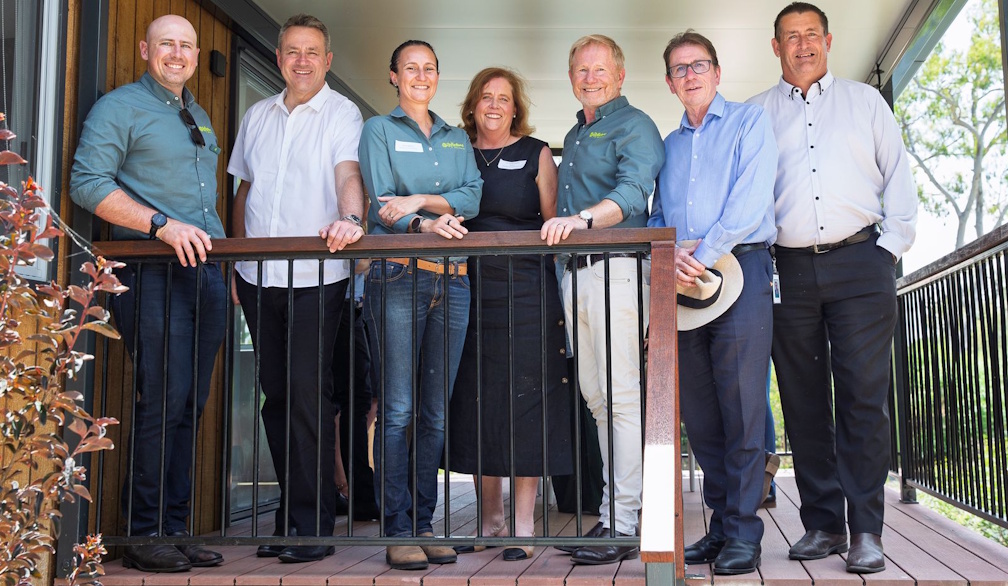Why are child carers still paid less than retail workers? And how can we help fix it?
- Written by Peter Martin, Visiting Fellow, Crawford School of Public Policy, Australian National University

So certain is the Australian government that childcare workers are being poorly paid that it is handing them an extra 15% – 10% this December, followed by a further 5% in December 2025 – and speaking as if there’s more to come.
It is calling the increases “interim[1]” because it expects the Fair Work Commission to offer at least that much. The commission has begun an investigation into what “early childhood education and care workers” are actually worth compared to workers in other occupations.
They’re not paid as much as most. On a list of the average hourly rates for about 100 occupations prepared by the Bureau of Statistics, child carers are the eleventh[2] lowest. They earn an average of $31.20[3] an hour – less than receptionists, who get $31.50, less than retail workers on $32, and less than data entry workers on $33.10.
Yet the Fair Work Commission says childcare workers are required to[4]
provide a nurturing environment and interact with the children in such a way that each individual child’s emotional needs are met
provide environments and experiences which are appropriately stimulating and engage with the children in such a way that each child’s cognitive, language and creative development is stimulated
observe babies and children sensitively and accurately and use a developmental analysis of those observations to assist in planning and caring appropriately for each child
plan appropriate programs for individual children and groups of children for all areas of their development and wellbeing
guide children’s behaviour and manage situations where a child’s behaviour is difficult and challenging
communicate appropriately and sensitively with families in a way that is supportive of the child’s well-being and development
The commission has given an indication of what it will do. It says it won’t start its investigation with a “blank slate[5]”. It will piggyback on the research it used to address the undervaluation of aged care work.
That may be a good sign for childcare workers – in March, the commission awarded most aged care workers more than 20%, and some as much as 28.5%[6].
Why is childcare so poorly paid?
If you guessed that gender was one of the reasons childcare workers are so poorly paid, the commission’s research suggests you’re right. About 96.6%[7] of childcare workers are women. It’s one of the most highly feminised industries there is.
Australian parents come into it too. As childcare customers, we are reluctant to pay too much more.
And when it comes to nurses employed by governments, as taxpayers we seem to be reluctant to pay too much more.
But much of it isn’t deliberate discrimination. The way the commission tells it, much of what has happened to the pay rates of childcare workers – along with nurses, aged care workers and workers in all manner of other highly feminised occupations – is a series of accidents, each building on the other.
Here’s the commission’s potted history of how we got here, which goes back more than a century.
Wages for those with wives and children
The first tribunal to set a so-called “living wage” was the Commonwealth Court of Conciliation and Arbitration in the so-called Harvester decision[8] of 1907.
Sunshine Harvester[9] made grain harvesters at Sunshine, now a western suburb of Melbourne.
Justice Henry Bournes Higgins[10] ruled that even unskilled workers were entitled to live in “frugal comfort”, which he said was enough to allow an unskilled labourer to feed, house and clothe a wife and three children[11]. Skilled workers would get a margin for skill.
Women, often single and not usually needing to support wives and children, got less; in early days about 30% less and later about 25% less[12].
The 1969 equal pay decision was meant to end that gap. It granted equal pay to women where they were assessed as doing exactly the same work[13] as men.
But women usually don’t do exactly the same work as men. Even today, women are far more likely to be nurses than men, and far more likely to be child carers.
Caring still isn’t seen as ‘equal value’ work
So in 1972, the commission ruled that even women undertaking different jobs than men had to get the same pay rate, so long as the work was of equal value[14].
Equal value was hard to determine, and for a lot of jobs, it never was. There were a few attempts to link skill levels in feminised industries to the C10[16] classification in the Metal Industry Award, but they depended on an assessment of skills.
So-called invisible[17] caring skills often weren’t noticed, in part because work similar to nursing and childcare had been traditionally done at home without charge and without training, even though training was later required.
The commission – now called the Fair Work Commission – had shown itself to be slow in updating assessments of the skills required for jobs such as childcare, meaning that female pay has climbed at a snail’s pace relative to men’s for decades.
Four decades ago, the average Australian woman working full time got 82% of what the average man did. Two decades later it was 85%. Last year it was 87%.
What’s being done? And will it be enough?
Responding to that glacial change, in 2022 the newly-elected Albanese government rewrote the Fair Work Act to require the commission to “promote job security and gender equality[18]”.
That’s what the commission’s now doing. It is having to do it not only because it has been slow in the past, but also been the ultimate employers have been stingy, forcing childcare workers and nurses to rely on awards.
For childcare workers, the ultimate employers are parents. For nurses, they are largely state governments[19]. Few have been keen to pay over the odds.
The Productivity Commission says the only way to get more workers into childcare is to pay them more[20], either in our own right as parents, or through our taxes via the government.
There’s little doubt the economy can afford it. Calculations by AMP chief economist Shane Oliver suggest the increase just announced will lift Australia’s overall wages bill by a few tenths of a percentage point[21].
Figures released Tuesday showed overall wages climbed 4.1%[22] in the year to June, a few points above prices which climbed 3.8%[23].
A few more points would be welcome, but they wouldn’t contribute to ongoing wage inflation: they would be a one-off correction for an injustice.
If we had it in us, we would help as well. Either as parents or taxpayers, we would pay childcare centres more, so they could pay their workers more. We would act as if their work – nurturing our children – really mattered.
References
- ^ interim (www.pm.gov.au)
- ^ eleventh (www.abs.gov.au)
- ^ $31.20 (cdn.theconversation.com)
- ^ required to (www.fwc.gov.au)
- ^ blank slate (www.fwc.gov.au)
- ^ 28.5% (www.fwc.gov.au)
- ^ 96.6% (www.fwc.gov.au)
- ^ Harvester decision (www.fwc.gov.au)
- ^ Sunshine Harvester (www.abc.net.au)
- ^ Justice Henry Bournes Higgins (adb.anu.edu.au)
- ^ a wife and three children (www.fwc.gov.au)
- ^ 25% less (www.nma.gov.au)
- ^ exactly the same work (www.nma.gov.au)
- ^ equal value (www.fwc.gov.au)
- ^ SomchaiStock/Shutterstock (www.shutterstock.com)
- ^ C10 (www.fwc.gov.au)
- ^ invisible (www.fwc.gov.au)
- ^ promote job security and gender equality (theconversation.com)
- ^ state governments (espace.curtin.edu.au)
- ^ pay them more (www.pc.gov.au)
- ^ a few tenths of a percentage point (www.amp.com.au)
- ^ 4.1% (www.abs.gov.au)
- ^ 3.8% (www.abs.gov.au)
Authors: Peter Martin, Visiting Fellow, Crawford School of Public Policy, Australian National University











